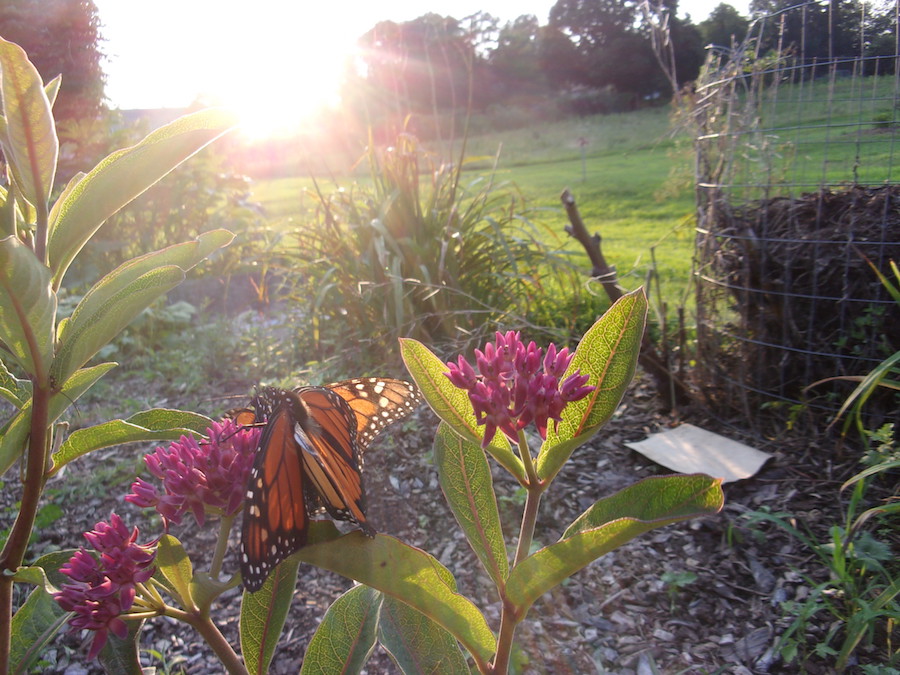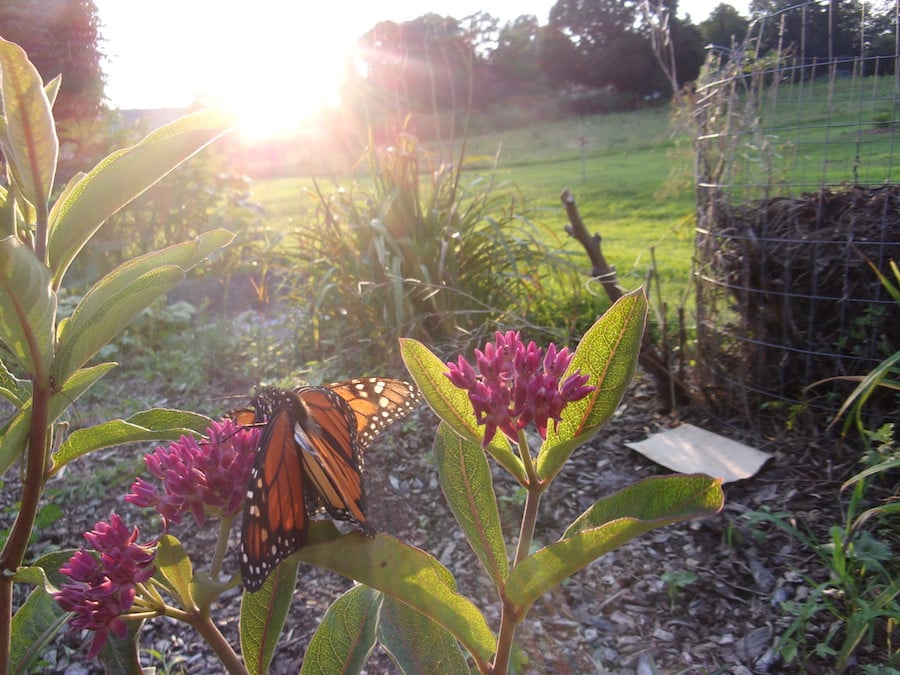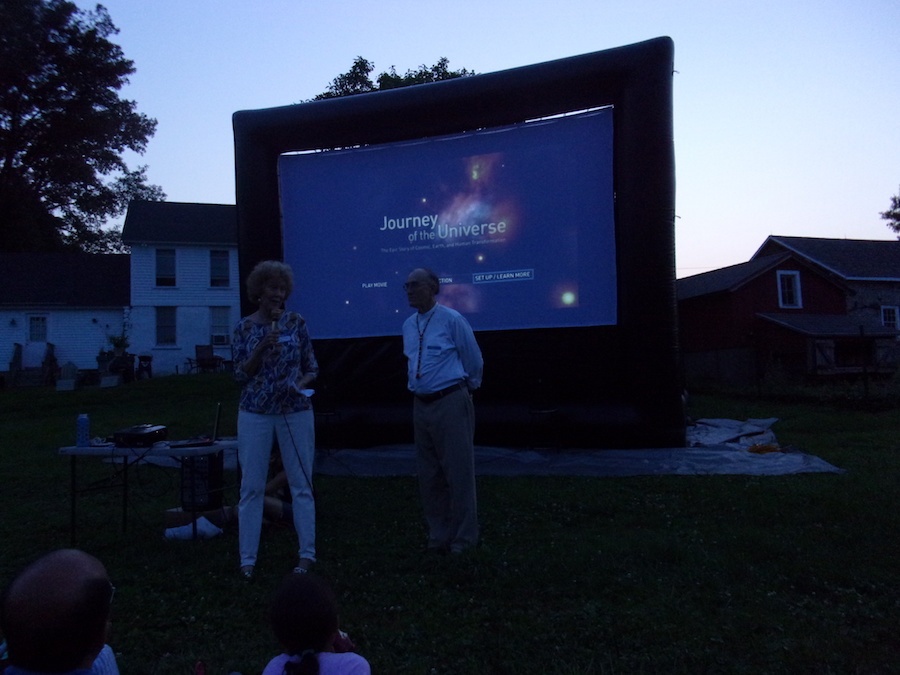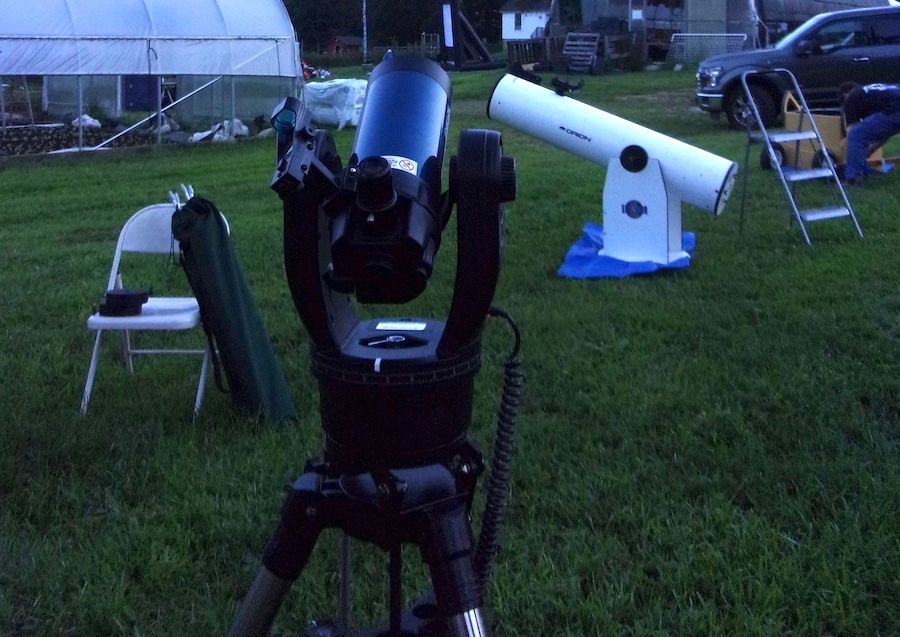
Culture & Community | Film | Woodbridge | Food & Farming

| Leah Andelsmith Photos. |
It was a four-planet night at Massaro Community Farm. Although Venus had set behind the big red barn earlier in the evening, telescopes were trained on Mars, Saturn, Jupiter and the crescent moon. People queued up for their chance to peer through each one. A symphony of insects and frogs played on.
It marked the end of an outdoor film screening Thursday night at the farm, which stretches along a country road in Woodbridge. Over the evening, close to 70 attendees brought picnic dinners to the event, a viewing of Journey of the Universe: An Epic Story of Cosmic, Earth, and Human Transformation with Yale professors-turned-producers Mary Evelyn Tucker and John Grim. The Astronomical Society of New Haven (ASNH) also brought several of its personal telescopes to provide the group with an up-close view of the solar system.
Massaro has long been about expanding its own scope in the community. First founded as a family farm in 1916 (read that history here), the farm remained in the Massaro family for almost a century, entrusted to the Town of Woodbridge after the last two Massaro sons died in 2007. The following year, it was turned into a community farm, with board oversight a rotating slate of programs.
“This is not just a working farm, but a shared community space,” said Executive Director Caty Poole.
Thursday, people of all ages gathered at the farm’s central hub, rolling up with food and picnic blankets. For some it was a family night out. For others, a date. A young couple sat on a blanket facing each other, sharing a plate between them. In the middle of the space, a group of friends were circled up with a potluck picnic. Kids showed off their dance moves with no music, entertaining their parents and grandparents. A pair of friends laid down on the grass, not talking, simply watching the sky turn from golden afternoon to cornflower twilight.
 When it got dark enough to see the screen, Tucker and Grim came forward to help the audience’s minds transition to the enormous scope of the film they were about to see.
When it got dark enough to see the screen, Tucker and Grim came forward to help the audience’s minds transition to the enormous scope of the film they were about to see.
“Our universe matters,” Tucker said. “The universe wants to come forward with its story. We’re the first generation to inherit this story and the story is in our hands: which species will live, which farms will grow.”
Grim encouraged the audience to “feel the wonder and awe” in the film and not get bogged down in the data. Our sense of wonder can transcend the things that divide us, he said.
Journey of the Universe blends astronomy with philosophy, hearkening back to Pythagorus and the other ancient Greeks who did the same. It’s full of broad, abstract ideas complemented by scientific data. It describes how a supernova—the explosive death of a star—creates all of the elements—oxygen, phosphorus, even gold—that make up everything in the universe, and draws the conclusion that “the stars are our ancestors.”
“What if the earth, the universe itself, has it’s own unique story to tell?” the film’s narrator asks at the outset.
The view is holistic and focused on systems and patterns, a lot like the organic farm where the screening took place. It likens the earth’s atmosphere to a cell membrane and the earth itself to a living cell: a self-balancing system that sustains life. The scope is at once monumental and microscopic.
At the film’s conclusion, Tucker again addressed the crowd. Her message was short and sweet: “Let’s go look at the stars who are our ancestors.”
The dew was already settling on the grass as attendees packed up their picnics and made their way by lantern light to the telescopes. In the darkness, the warm, earthy smell of the farm came to the fore: soil and compost, sweetgrass and hay.
 The practical experience of stargazing made the lofty considerations brought forward in Journey to the Universe real and immediate. Attendees were patient as they waited in line for a peek at our planetary neighbors. Conversations sparked around plastic in the oceans and coral die-offs, and step-stools were on hand next to each scope to accommodate pint-sized astronomers. Planets unfathomably far away were brought close enough to view in detail and the sense of awe and wonder was palpable. Faces tilted up to the stars shining dimly in the hazy sky.
The practical experience of stargazing made the lofty considerations brought forward in Journey to the Universe real and immediate. Attendees were patient as they waited in line for a peek at our planetary neighbors. Conversations sparked around plastic in the oceans and coral die-offs, and step-stools were on hand next to each scope to accommodate pint-sized astronomers. Planets unfathomably far away were brought close enough to view in detail and the sense of awe and wonder was palpable. Faces tilted up to the stars shining dimly in the hazy sky.
“These scopes look like cannons!” someone said, admiring ASNH’s equipment.
A young man leaned over the telescope that revealed the moon’s craters in crisp detail. “That’s so cool!” he exclaimed, standing up. He immediately went back in for another look.
“That’s pretty awesome, but I still think Saturn’s pretty dope,” he said.
“I want to get in line to see Saturn!” one person declared.
“Did you see the moon? Boy, those craters were amazing!” exclaimed another.
Lunar features showed up in crisp relief, but the much more distant planets appeared as small flat discs. That didn’t diminish the magic of seeing Saturn’s rings, standing out clearly from the planet’s surface. Or the dark streaks across Jupiter—storms that have been raging for centuries. Or the two tiny, bright dots off to one side that comprise its moons.
ASNH president Greg Barker told one viewer that Mars is closer to Earth this year than it has been since 2003, and that humanity will have to wait another 15 to 18 years before it comes this close again.
“Wow! I’m so lucky! Thank you!” the viewer said. “That’s the red dot I’ve been looking at all summer, not knowing what it was.”
Massaro Community Farm hosts events and activities year round, and several more programs are scheduled for the fall, including a fundraising dinner, workshop on using organic produce in cocktails called The Bartender’s Garden, and a full moon trail walk. For more information, check out their website.

